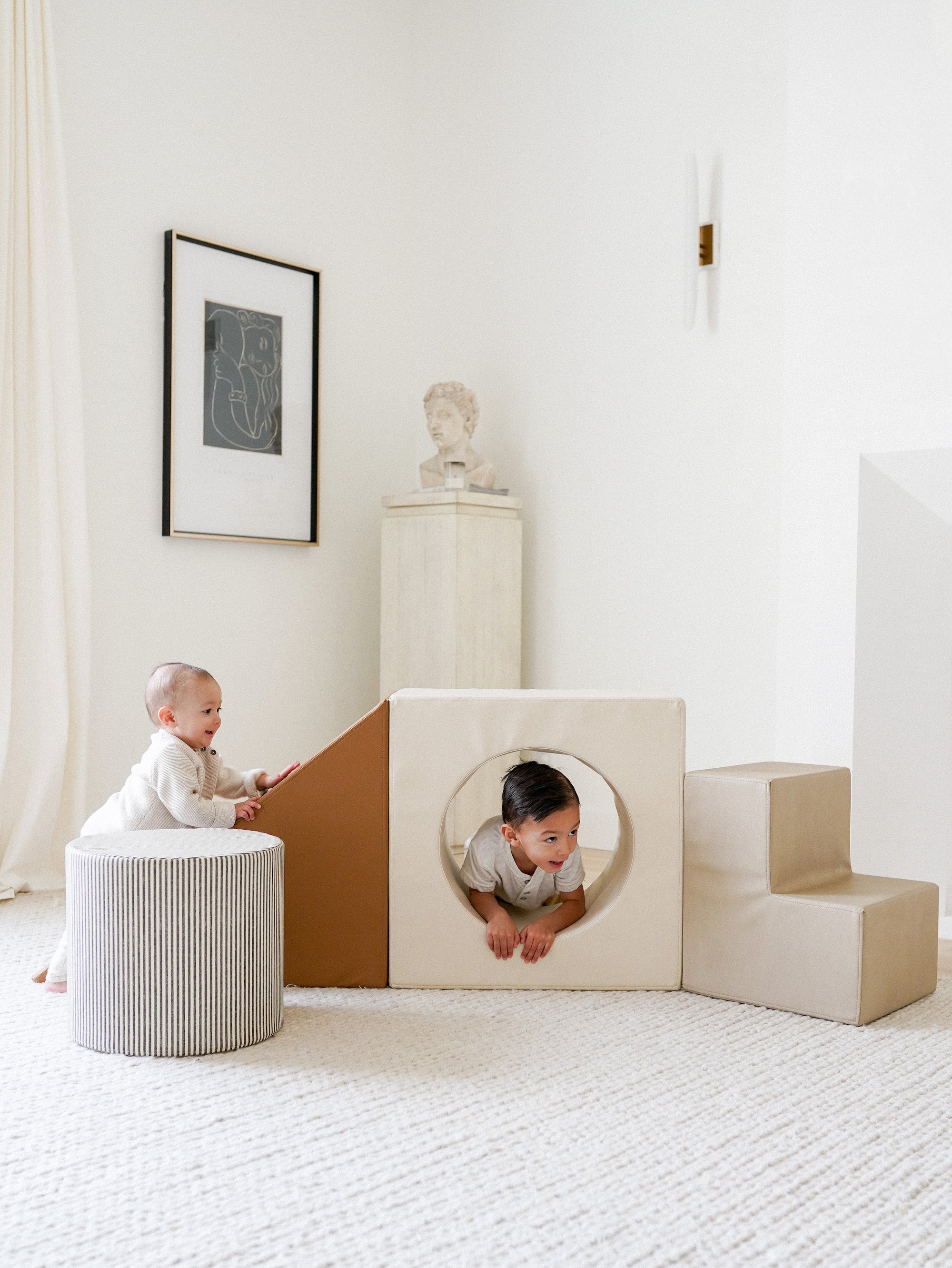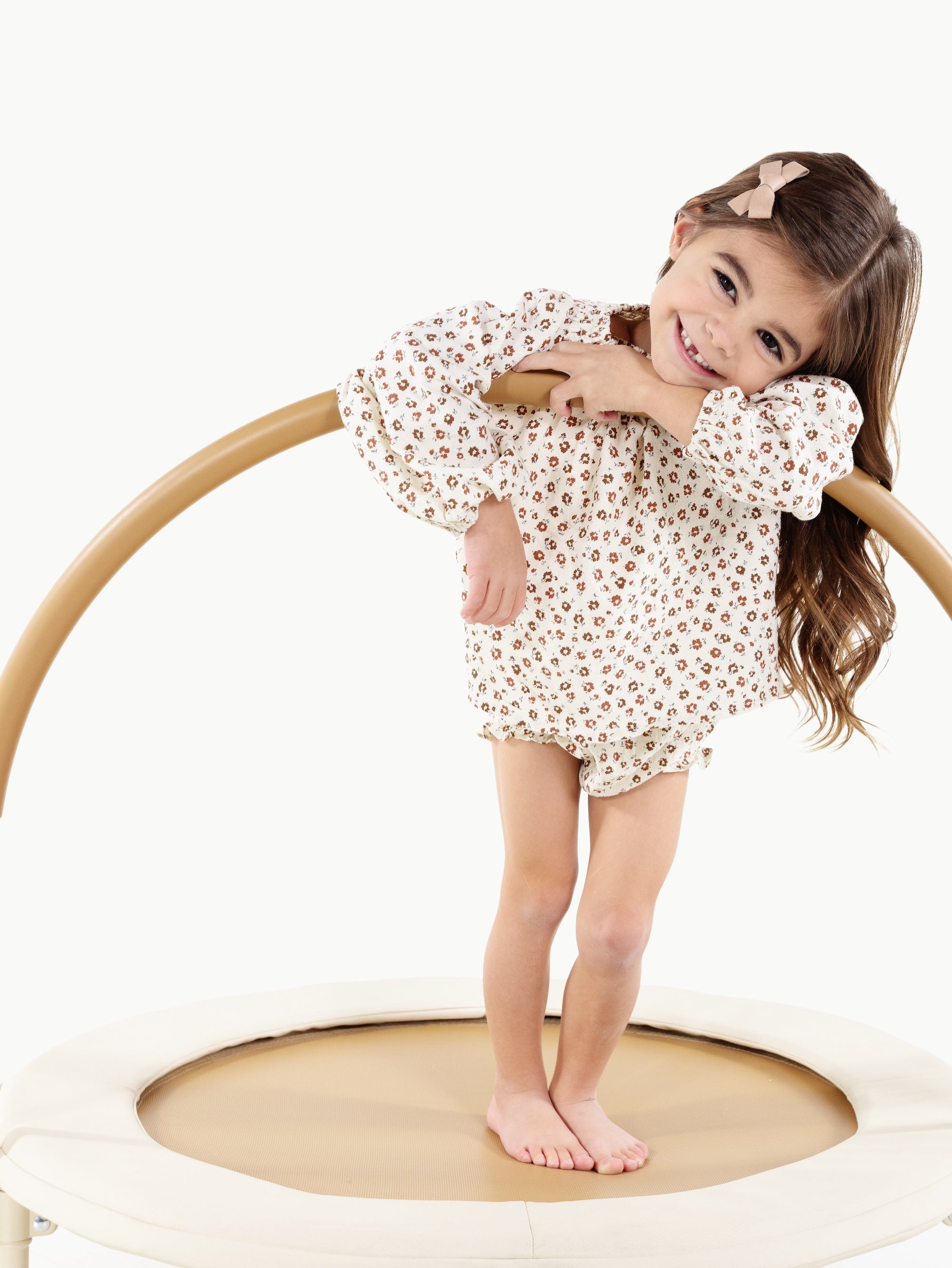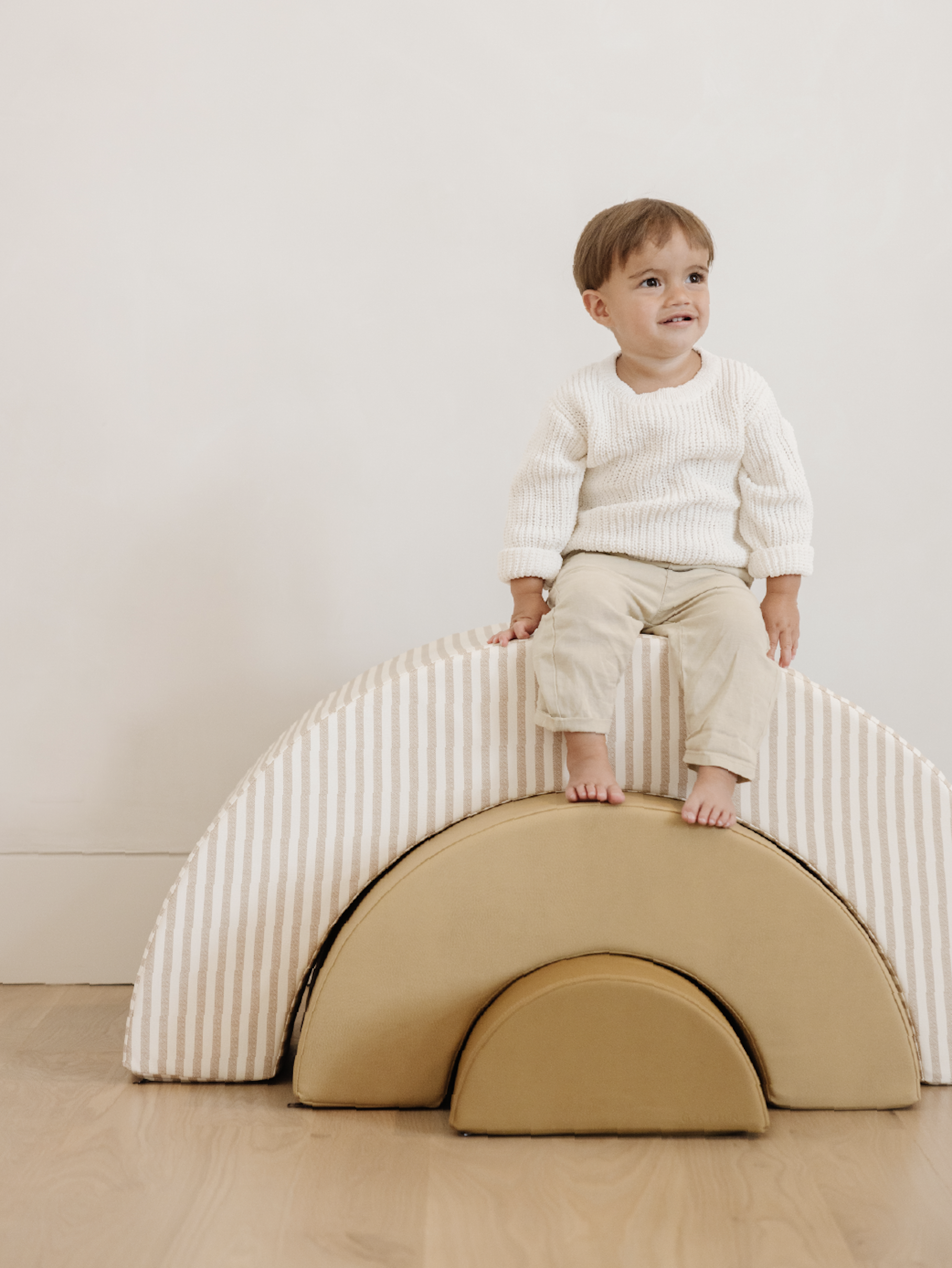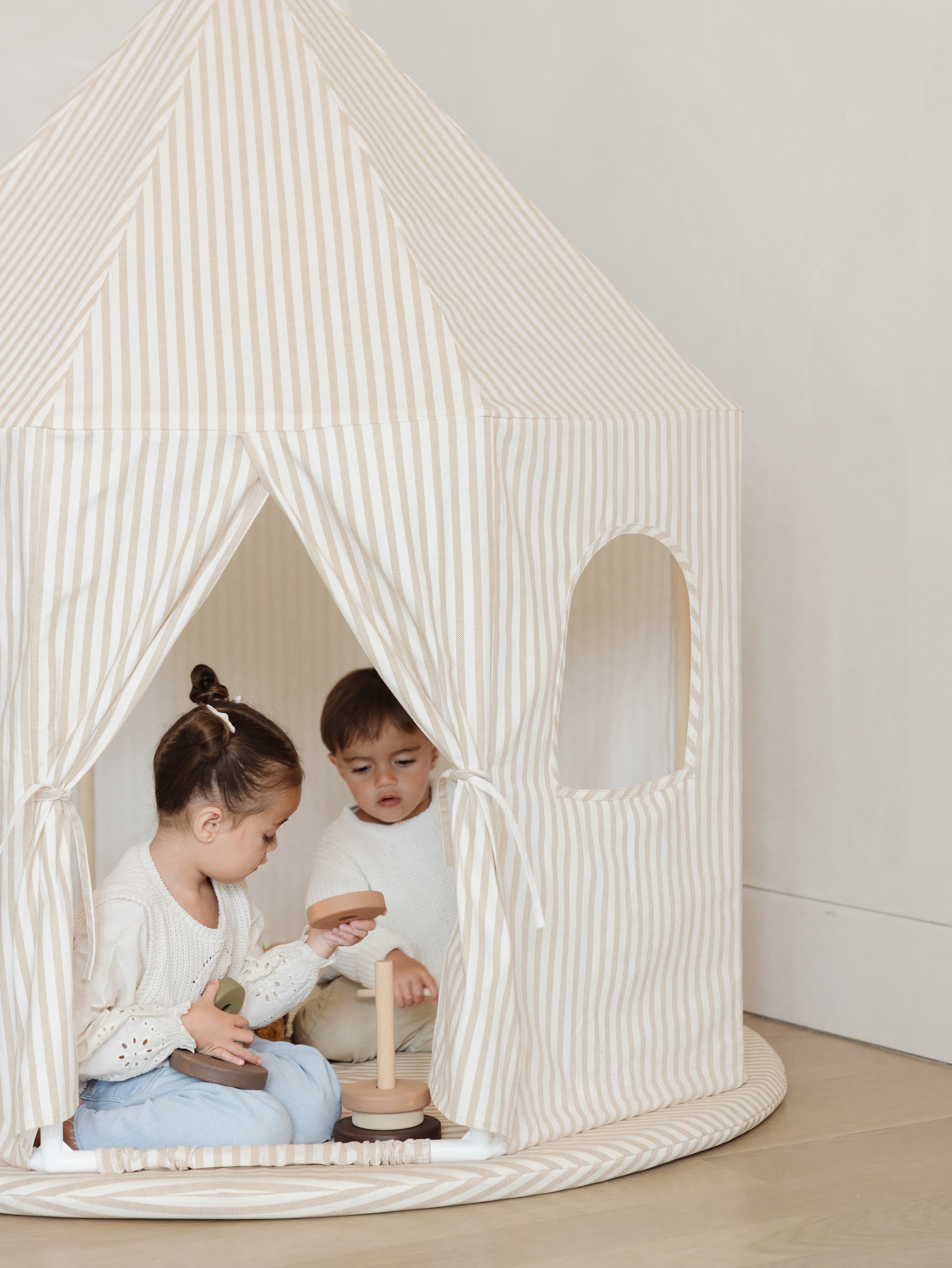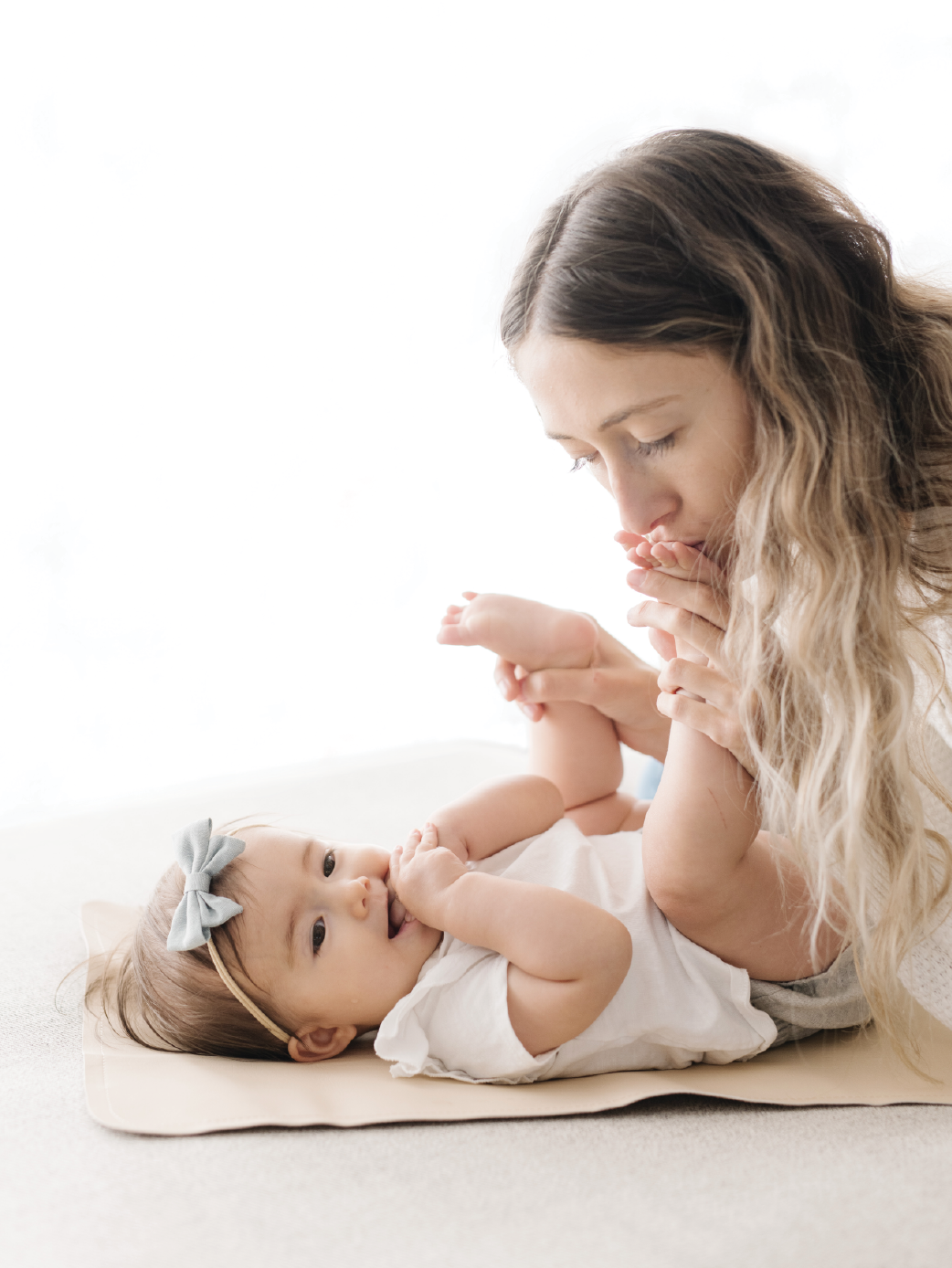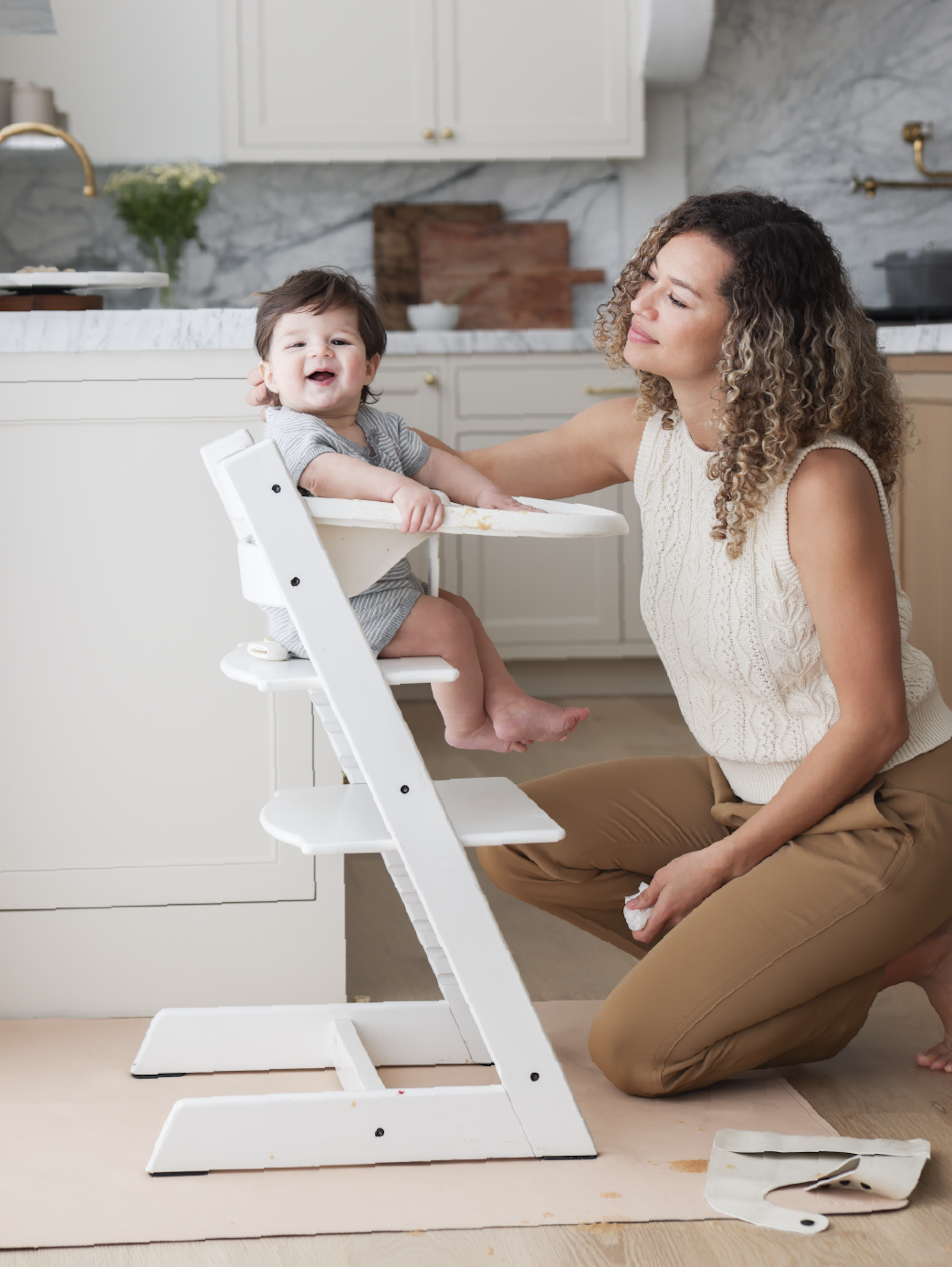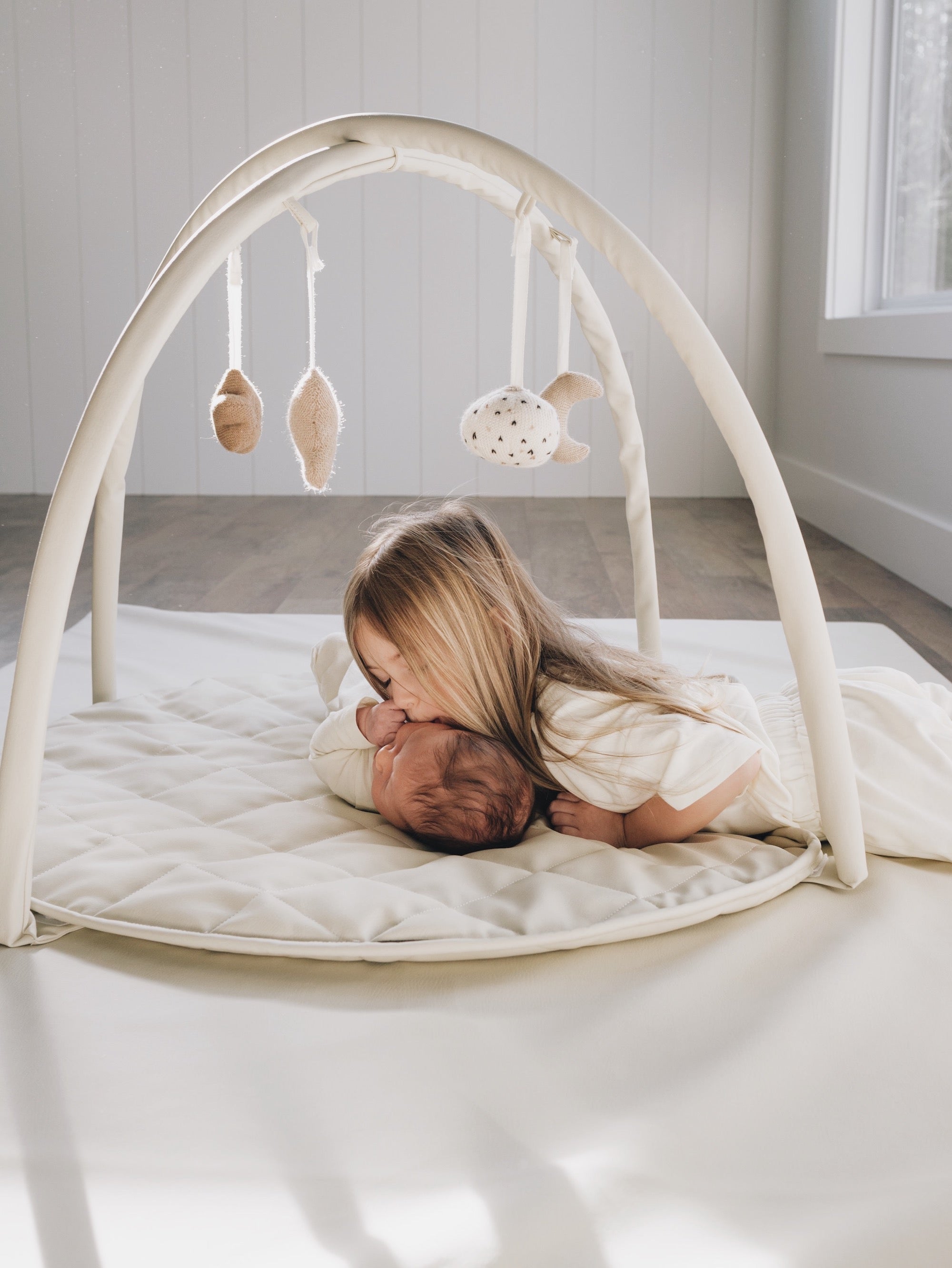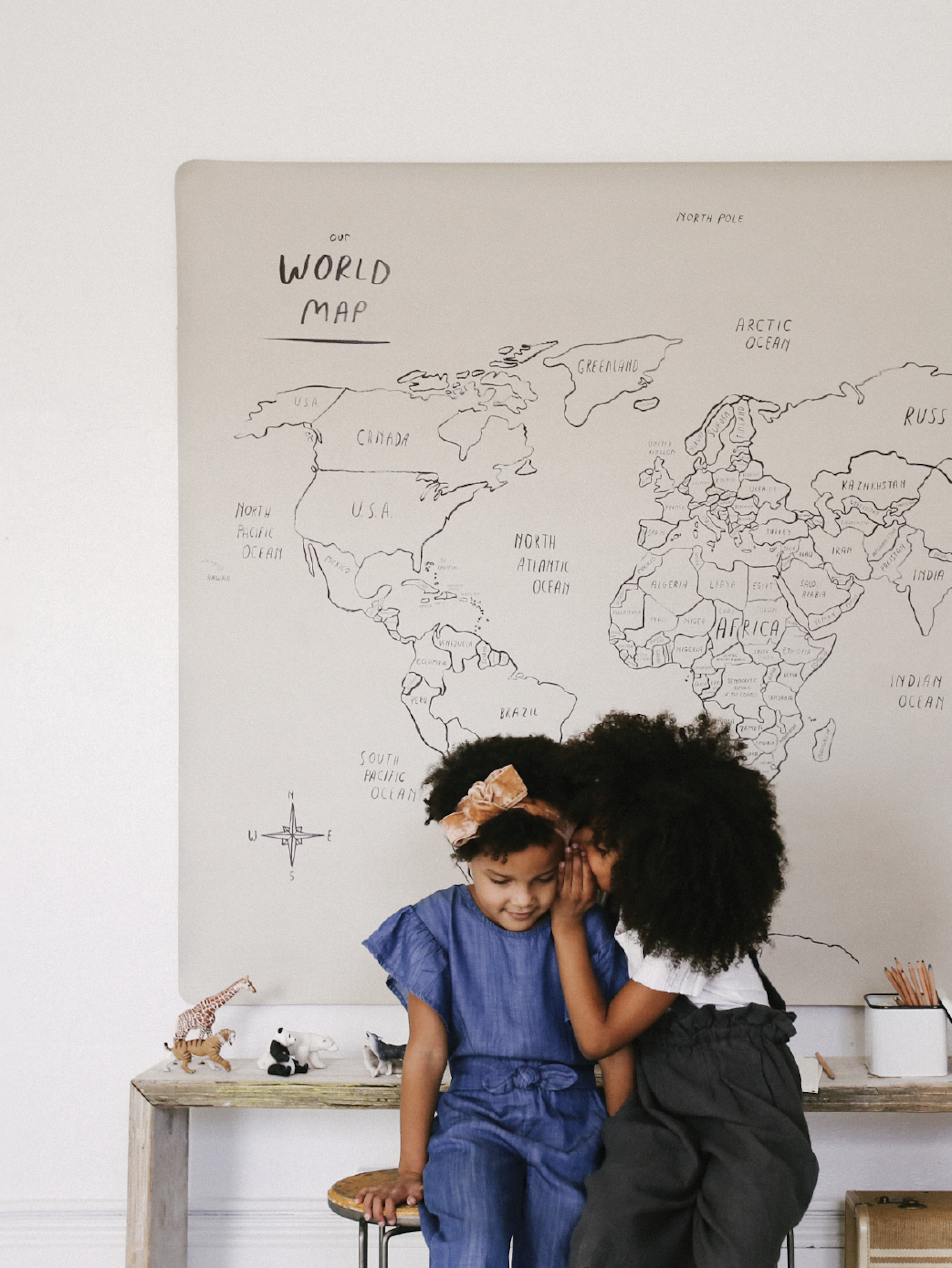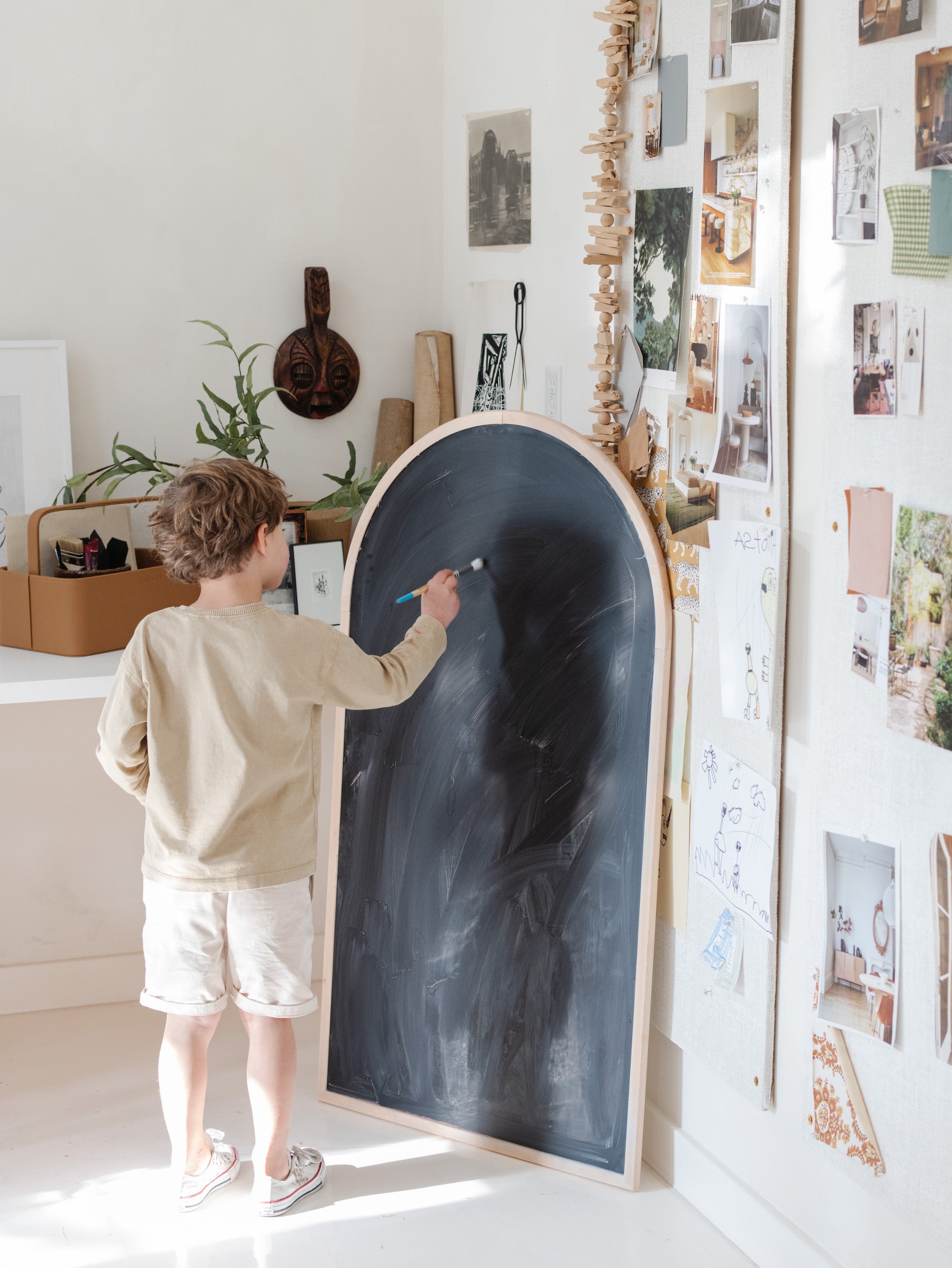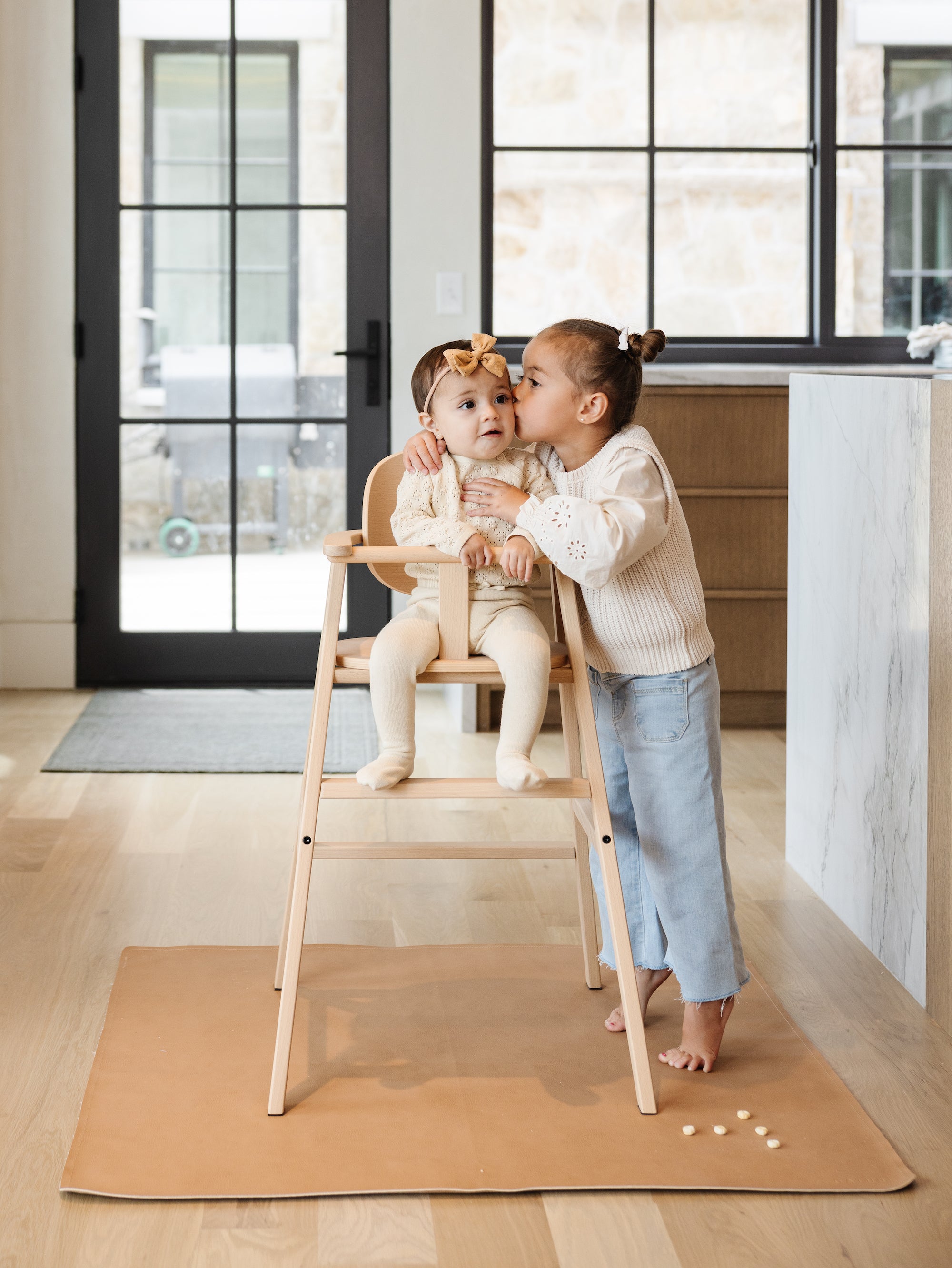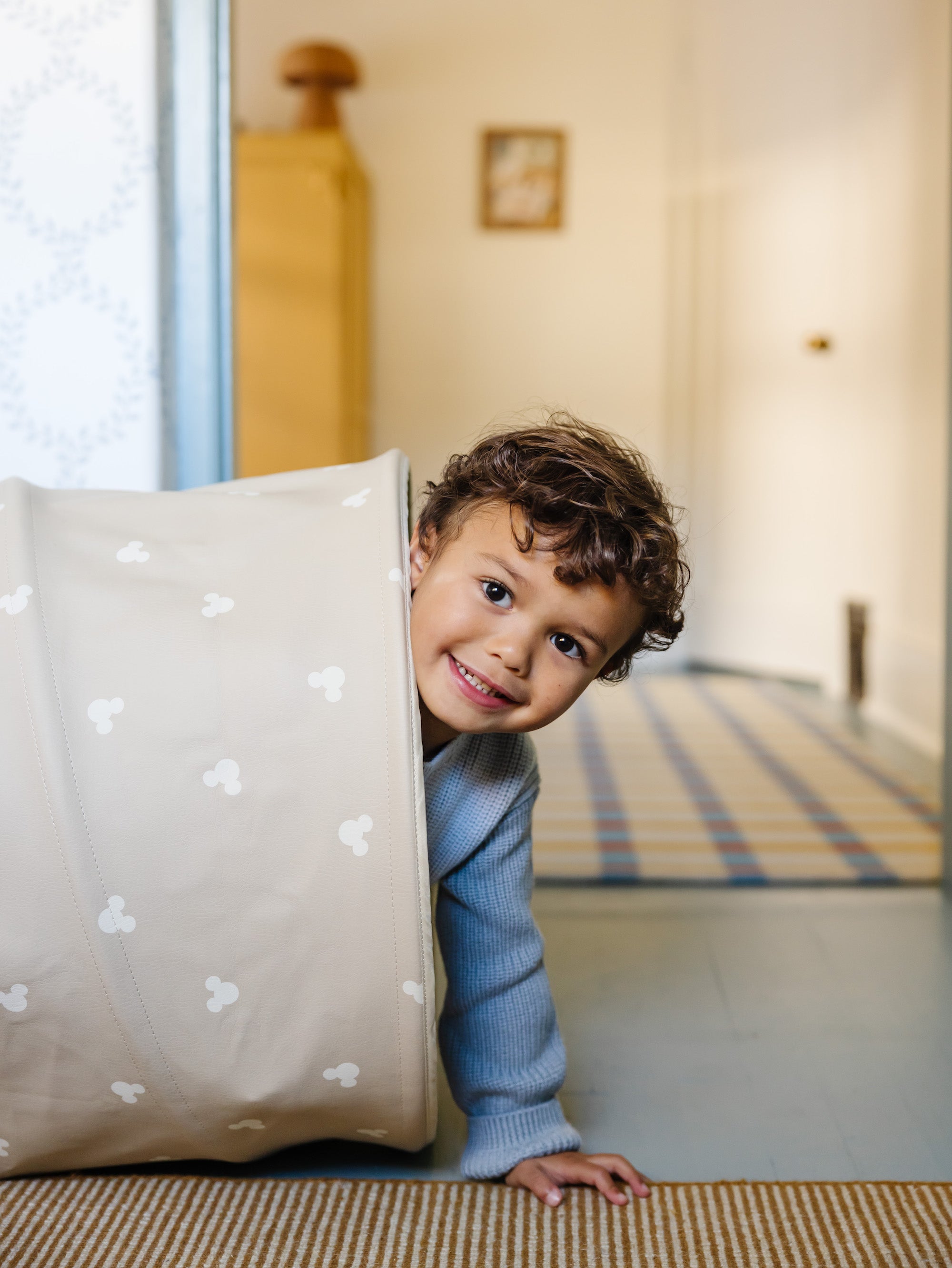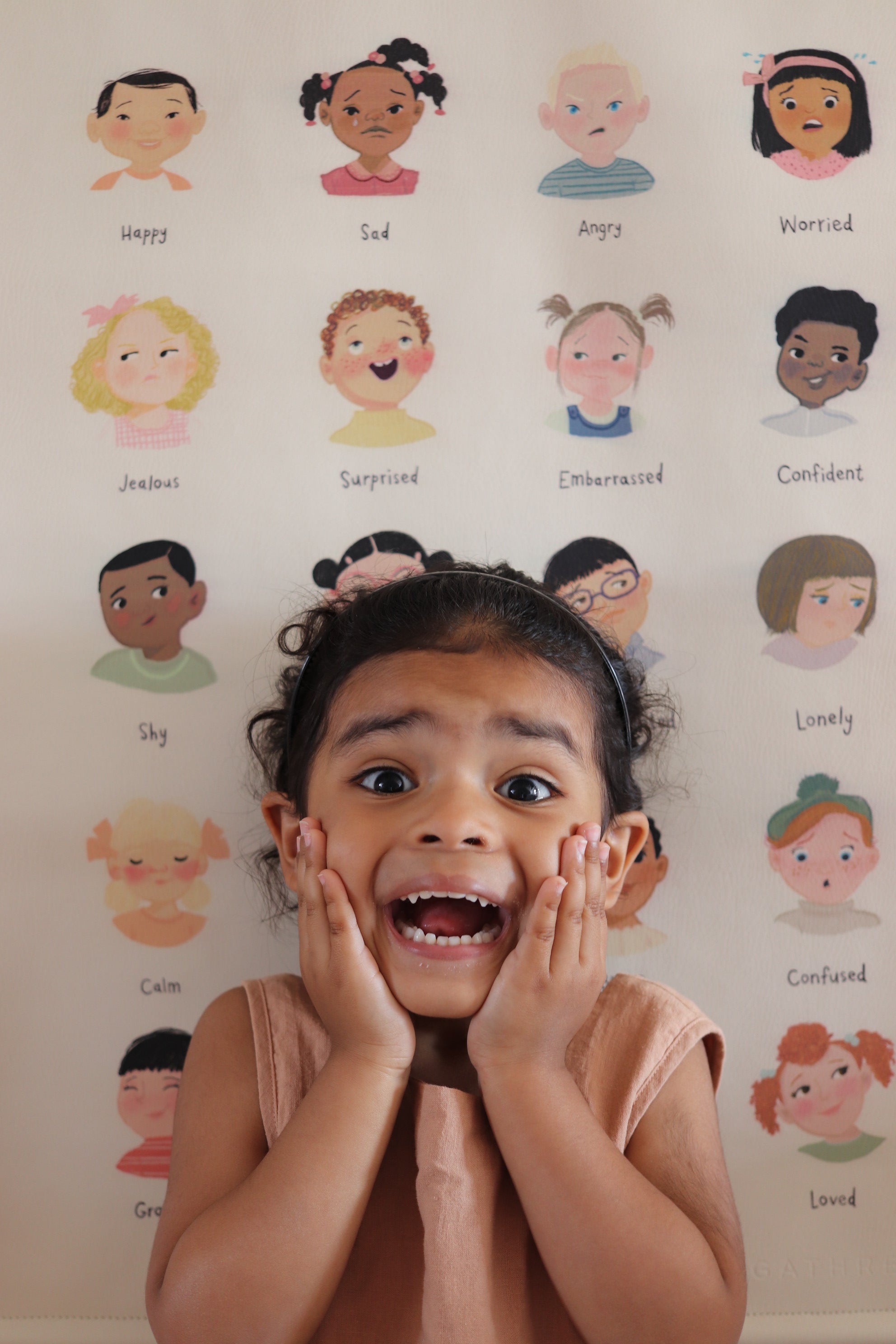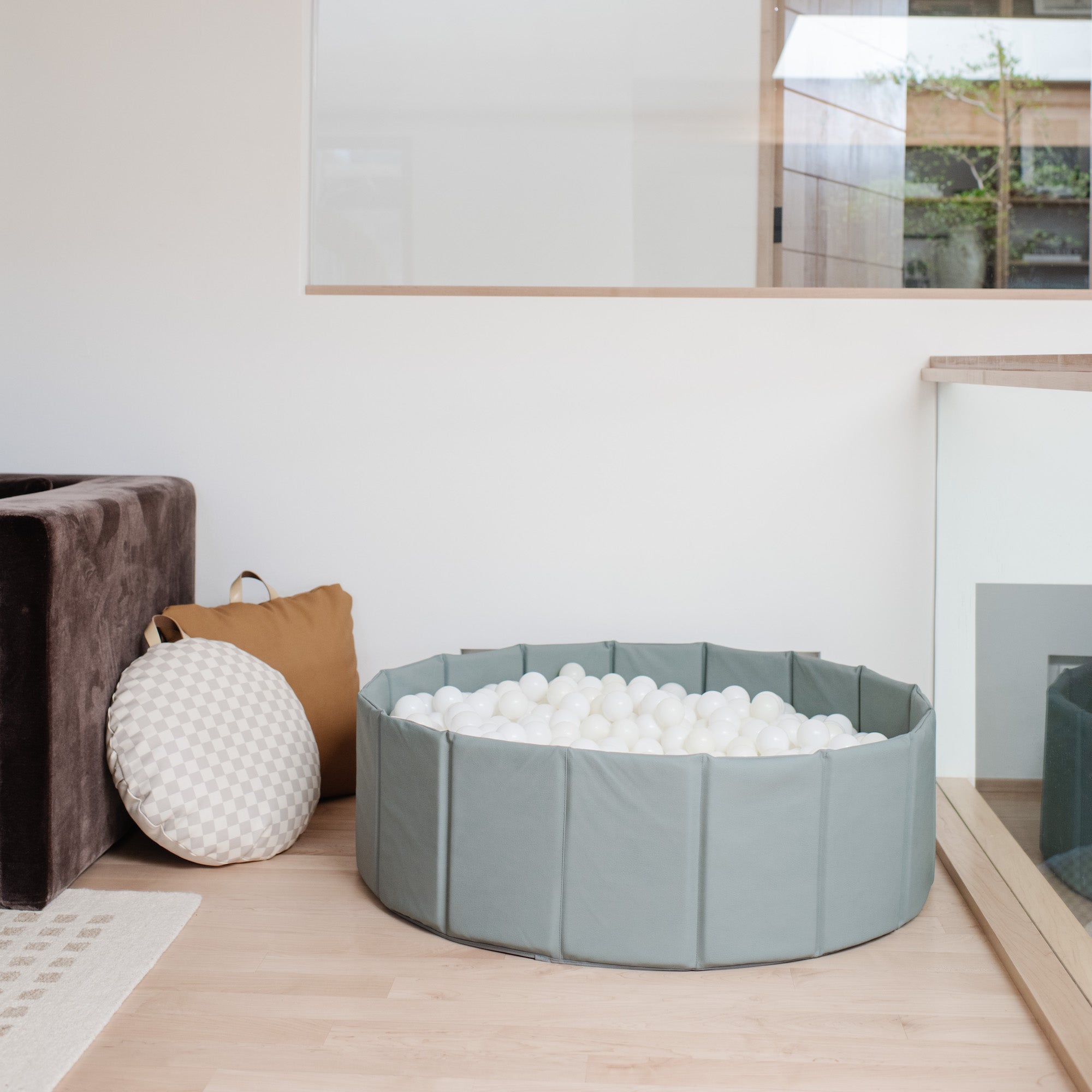TALKING FEELINGS WITH YOUR KIDS
Being a parent is an emotional job. Getting it all done — at home, at work, dealing with your own aging parents, relationships with friends — some days it can be tough to keep it together, and keep your own cool.
But that’s just half the equation. You’re also navigating the feelings of little people whose emotions don’t always make sense to them, especially at a young age, and who don’t yet know how to communicate them to you.
We often assume this is a skill children will naturally develop on their own, but usually, learning to express their feelings requires teaching, encouragement, compassion, and practice before they get comfortable opening up, especially in the moment.
Our new Emotions Tapestry, illustrated by acclaimed children’s book illustrator, Vanessa Brantley Newton, is a great (and stylish) way to keep all the emotions on display so you can create space for learning lessons with your kids. We’ve also collected personal stories and suggestions from our team and community to share with you here to help spark these important conversations.
Start by opening up about your own feelings.
By using clear adjectives to describe your emotions to your kids, you not only show them it’s ok to share how they feel inside, it also gives them a vocabulary they can use to express their own feelings with you. When you feel a certain way, try to explain to them in clear words that you feel frustrated, happy, sad, excited, etc.—followed by why. This will help them learn by example how to connect the dots between an event that happened and the emotion it triggers.
“I talk to my kids about how I’m feeling... Including them in those moments seems to make their most difficult moments a lot easier to navigate for all of us. We have examples and common language to draw from.” – Evan G.
Help them find the words.
It can take years (and for some people, an entire lifetime) to become comfortable and clear communicators, especially when it comes to expressing feelings. So before they’re able to do so on their own, help them get there. For example, saying “you seem mad because that boy took your toy” or “I think you’re angry because you yelled at your sister”—this can help them learn to identify and label their feelings.
“From a young age, when my daughter would have a tantrum, I would say, ‘You seem mad!’ or ‘You're frustrated!’ After a while, even though she wasn’t quite two years old and could barely talk, when she got upset about something she’d say ‘I'm FWUSTWATED!’ Which was hilarious coming from her tiny, little, baby voice.” – Maddie
Allow them to feel how they feel.
We’ve all been there. Your toddler has a major meltdown in the parking lot, grocery store, walking into school. It can be frustrating, confusing, or even maddening—for you. In those moments, trying to understand what’s upsetting them can be extremely difficult, especially if they haven’t yet learned what different emotions are or feel like. So before that meltdown happens, make time (on multiple occasions) to teach your child about different emotions— so they can understand what they’re feeling, why they’re feeling it, and how to express what’s bothering them in that moment.
“One way to handle this kind of situation is to acknowledge their tears by saying things like ‘that made you feel sad’ versus ‘you're okay, stop crying.’ This allows them to recognize and accept their feelings, instead of bottling them up (which usually backfires anyway.)” – Erin G
Our Emotions Tapestry is a great tool for helping them learn, available as a print to hang on the wall in their room or a Micro mat to keep on their desk or the kitchen table.
Try to avoid scolding or shutting them down.
It’s often tempting to tell kids to stop crying, to be brave, or get over things quickly—because as adults, we understand our feelings much better, we can deal with them appropriately, and more easily get over what’s bothering us. But telling children to dismiss their emotions, or worse, telling them how they should feel, can undermine their ability to understand their emotions and how to deal with them.
“Telling kids to ‘buck up’ or ‘stop crying,’ or dismissing them by telling them ‘you’re okay,’ might be pretty common, but I think that response sends a message that what they’re feeling isn’t important. To them, it is. My wife and I try to let them feel. If it seems like they’re only reacting to get our attention or prove a point (which does happen from time to time), we do our best to acknowledge them and gently redirect them to share what’s really going on.” – Evan G.
Pay attention to their body language.
“When my daughter is crying, she can usually identify (often with great accuracy since about two years old) whether she is hurt, sad, mad, hungry, or tired. That also guides my response. But it takes paying attention and really listening. One time, while riding bikes together, she began screaming. I couldn’t get her to calm down. When I looked more closely at her, I noticed her face was bright red—she was overheated. I took off her jacket and she instantly calmed down. She just didn’t know how to explain that she was overly hot. By stopping to look at her, not just yelling at her to stop crying, I was able to fix the situation.” – Courtney K
Validation is critical.
Acknowledging a child’s emotions without judgment allows them to work through their feelings without guilt or shame. It can sometimes be tempting to tell them, “be tough, don’t cry” (which is fine if they trip and fall and don’t actually get hurt). But if another child says something mean, they’re sad because you’re leaving for work, or they’re anxious about their first day of school—it’s important to validate those feelings. This allows them to acknowledge real emotions, work through them, and most importantly, know it’s ok to not be ok.
Words aren’t always the answer.
Being near and physically present with your child can be just as impactful as saying the right thing. There are a million words and just as many emotions. But the simple act of sitting down with them, touching their face, holding their hand, or looking into their eyes as they work through how they feel—that can be more powerful than anything you could say to comfort them.
Lastly, the sooner you start, the better.
Finding opportunities to talk about feelings and encouraging your little one to do so as early as possible helps them grow increasingly more comfortable opening up as they grow older. One way to do this is to frame your conversations around feelings-oriented questions that require more than a one-word answer like “yes” or “no.” For example, instead of asking, “How was school today?” Answer: “Fine”—ask more open-ended questions that encourage them to dig a little deeper and share more of how they feel. It’s a natural way to create a teaching moment just by showing them how much you actually care.
We hope this blog helps you find space and time to discuss emotions with your child or children and help them thrive as they continue to grow.
